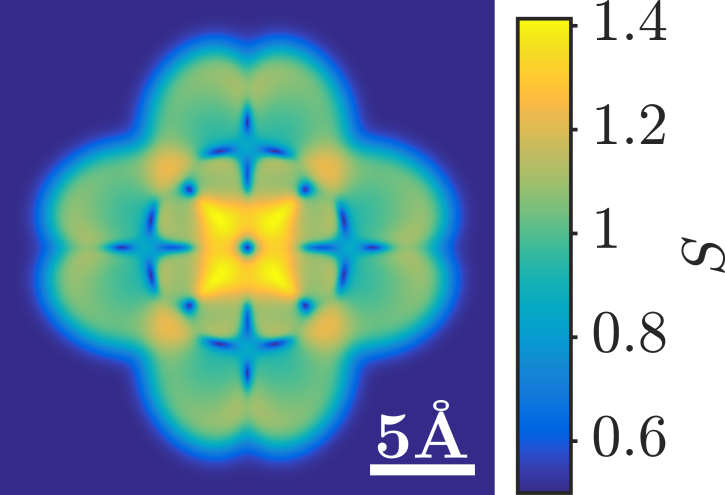



Invited talk
Many-body correlations in STM single molecule junctions
Institute of Theoretical Physics, University of Regensburg, 93040 Regensburg (Germany)
The electronic structure and the transport characteristics of single molecule junctions are strongly influenced by many-body correlations. Some of their fingerprints have been theoretically predicted [1,2] others clearly observed in STM experiments [3,4] both at the spectral and topographical level. We consider here a copper phthalocyanine (CuPc) molecule on an insulator coated substrate and demonstrate the non-equilibrium tip induced control of the molecular spin state. We find that, under the condition of energetic proximity of many-body neutral excited states to the anionic ground state, the system can undergo a population inversion towards these excited states. The resulting state of the system is accompanied by a change in the total spin quantum number [5]. Experimental signatures of the crossover are the appearance of additional nodal planes in the topographical STM images as well as a strong suppression of the current near the center of the molecule. The robustness of the effect against moderate charge conserving relaxation processes has also been tested.

Figure 1: Simulation of the spin map of a Cu-Phthalocyanine as a function of tip position. At specific tip positions a low to high spin transition on the molecule is triggered by the external bias across the junction and is accompanied by population inversion towards excited molecular states.
[1] A. Donarini, G. Begemann, and M. Grifoni Nano Lett. 9, 2897 (2009).
[2] D. Toroz, M. Rontani and S. Corni, Phys. Rev. Lett. 110, 018305 (2013).
[3] F. Schulz, M. Ijäs, R. Drost, S. K. Hämäläinen, A. Harju, A. P.Seitsonen, and P. Liljeroth, Nat. Phys. 11, 229 (2015).
[4] B. W. Heinrich, L. Braun, J. I. Pascual, and K. J. Franke, Nat. Phys. 9, 765 (2013).
[5] B. Siegert, A. Donarini, and M. Grifoni, Phys.Rev. B 93, 121406(R) (2016).